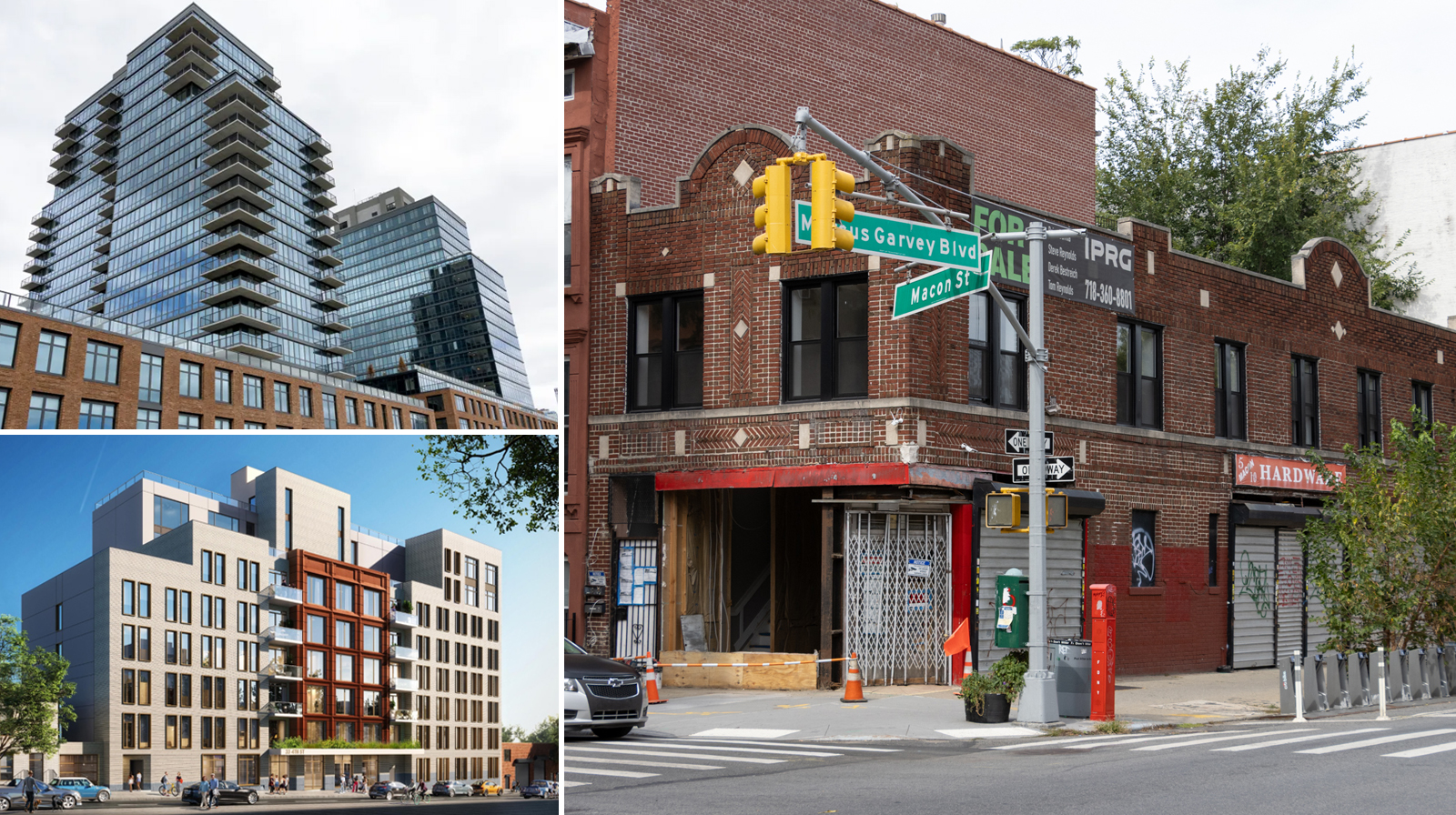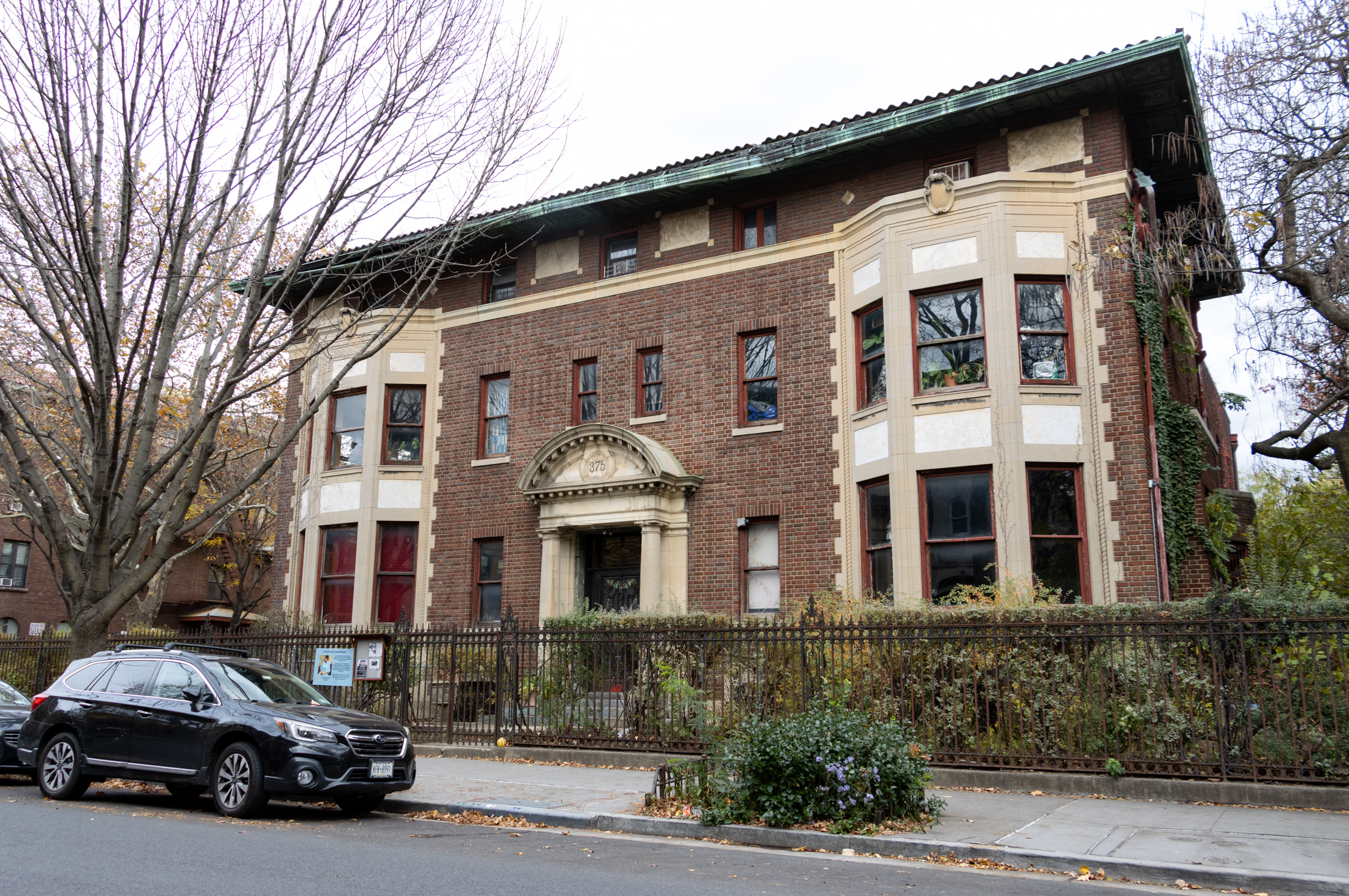Facade Easements: Worth the Risk of Audit?
As we mentioned in yesterday’s Events post, Tim Gunn from the Trust for Architectural Easements gave a lecture last night about the tax write-off available to owners of historic buildings that donate a facade easement. Historically, people have been able to write off 10 to 15 percent of the value of their homes, not an…

 As we mentioned in yesterday’s Events post, Tim Gunn from the Trust for Architectural Easements gave a lecture last night about the tax write-off available to owners of historic buildings that donate a facade easement. Historically, people have been able to write off 10 to 15 percent of the value of their homes, not an insignificant amount in this day and age. The only problem is that, despite the existence of case law in support of the easement, the IRS has decided that it doesn’t think that owners of houses that are already restricted by existing landmark laws should be able to take the write-off. As a result, 40 or so homeowners in Brooklyn that participated in the easement program in 2003 and 2004 have gotten hit with an audit in the last couple of years, according to one of the affected homeowners. We’d be interested to hear from any readers who attended last night’s program what Mr. Gunn’s spin on the audit threat was and whether he provided any compelling evidence that it’s still worth the risk for those in existing landmark districts.
As we mentioned in yesterday’s Events post, Tim Gunn from the Trust for Architectural Easements gave a lecture last night about the tax write-off available to owners of historic buildings that donate a facade easement. Historically, people have been able to write off 10 to 15 percent of the value of their homes, not an insignificant amount in this day and age. The only problem is that, despite the existence of case law in support of the easement, the IRS has decided that it doesn’t think that owners of houses that are already restricted by existing landmark laws should be able to take the write-off. As a result, 40 or so homeowners in Brooklyn that participated in the easement program in 2003 and 2004 have gotten hit with an audit in the last couple of years, according to one of the affected homeowners. We’d be interested to hear from any readers who attended last night’s program what Mr. Gunn’s spin on the audit threat was and whether he provided any compelling evidence that it’s still worth the risk for those in existing landmark districts. Sounds to us like people in areas that may be landmarked in the next couple of years should be all over this while those whose props are already landmarked would do better to sit tight.
Thursday Events [Brownstoner]





Guest 11:47,
What percentage of the “donation” do you get as your commission from TAE? 🙂
Bob – there you go again – pretending to be an authority on the appraisals of preservation easements or property values. Qualified independent third party appraisers are the ones who determine the value of these easements. Listed below is a summary of some of the issues that are taken into consideration. It is obvious you do not even know what a conservation easement actually is.
This is a summary of the Booklet Entitled APPRAISING EASEMENTS GUIDELINES FOR VALUATION OF LAND CONSERVATION AND HISTORIC PRESERVATION EASEMENTS Relative to the Difference Between Historic Preservation Easements, and Local Landmark Ordinances
The value of a Historic Preservation Easement is not derived solely from one’s ability or right to alter ones façade – a historic conservation easement will result in many other items which cause a loss in value.
Historic Conservation Preservation Easements typically contain the following provisions which clearly defines a unique set of conditions president which are not redundant to local ordinances, as follows:
1) Prohibiting demolition.
2) Prohibiting or severely limiting subdivision.
3) Prohibiting or limiting further construction or development. Depending upon the property, the easement may also prohibit or limit use changes.
4) Prohibiting changes to exteriors (and on occasion interiors) of historic or architecturally significant buildings depending upon their significance, barring changes to facades visible from public ways or prohibiting changes without prior review by the holding organization.
5) Replacement structure(s) must be constructed according to design plans approved by the easement holder.
6) Regulate changes to all facades, regulate how historic materials are replaced or repaired, prohibit or regulate placement of commercial or other signs and prohibit changes inconsistent with the building’s historic character.
7) Requiring maintenance in conformity with agreed standards to protect the historic structure.
8) Maintenance in excess of that ordinarily anticipated for comparable structures is typically required.
9) The cost of conducting “interruptive maintenance” out of the ordinary building maintenance cycle to correct what, in economic terms, are relatively minor defects (such as repainting or repair of deteriorated brickwork, cornices or window elements more frequently than would be required by market conditions) must be considered.
11) Prohibiting dumping of trash.
12) Allowing for certain rights in the holding organization, including periodic inspection, review and enforcement rights.
13) Basis Adjustment: An Easement donation reduces the basis in subsequent years by a fraction equal to the ratio of the value of the easement donation divided by the value of the property just before the easement donation takes place. The Basis Adjustment will cause a reduction from the owner’s depreciation schedule and or increase one’s capital gain upon sale of subject property.
14) Bank or Lender Consent to the subordination of Lender Rights relative to the Conservation Purpose of the easement.
15) Requiring the owner to keep the property fully insured against casualty loss and to reconstruct improvements if they are destroyed. Again, not all preservation easements require the owner to insure the property or to replace it in the event of casualty.
16) Easements provide for judicial extinguishment in the event the historic structure is destroyed. The proceeds from the extinguishment are prorated at a fraction equal to the ratio of the value of the easement donation divided by the value of the property just before the easement donation takes place, and paid to the easement holding organization (not the landlord), and some Banks or Lenders require the owner to keep the property fully insured against extinguishment proceeds.
Easement encumbered properties within local historic districts should sell at a penalty relative to unencumbered properties in such districts because the easement typically imposes stricter controls than those contained in the usual preservation ordinance.
Easements often prohibit changes in property use or changes to significant architectural features while ordinances may permit such changes, subject to review and approval by a board of architectural review.
Further, unlike preservation ordinances, the easement typically contains no relief for “economic hardship” commonly found in governmental regulation of land use.
Easements are granted in perpetuity while historic district ordinances and local zoning practices change over time to reflect the dynamics of changing political, economic and aesthetic needs and tastes in a community.
An easement on an historic urban property is generally intended to preserve and conserve the historic, architectural, scenic and cultural values of a certified historic structure.
In the case of properties located in registered historic districts, the easement will also protect the historic district through limitations on uses that might jeopardize the architectural scale, style and sense of cultural identity of the district. The easement does this by restricting alteration and modification of the property in ways that would change its historic appearance or remove or replace historic building fabric.
= = =
And to elaborate on what Bob is saying, it is pretty hard to meet the IRS’s new standard of an estimation of values that uses the “before and after” analysis requiring market derived empirical evidence to measure any loss in value after the donation is made whether the property is in a historic district or not.
In other words, the requirement is to present comparable properties with a difference in sales price. The house with the easement needs to be lesser than a comparable house sold at the same time in the same neighborhood without the easement. This is no easy thing to prove and defend if challenged. As is Indicated on the TAE’s own web site, the IRS now takes the position that valuation based on the Court Case History Measurement and IRS acceptable valuation range “methodologies” are either not relevant or are not recognized by the IRS.
As I understand it, the IRS is questioning a deduction based on reduced property value in instances where they question the validity of that reduction. The sticking point is the reduction in value,or lack thereof, rather than the actual value of the property (although, I imagine, exaggerating the latter might also land you in trouble). The most basic problem (if you can call it that) is that the value of houses in NYC Historic Districts seems to INCREASE rather than decrease.
I am somewhat confused by this discussion.
It seems like the deduction is legitimate and legally sound so long as the IRS accepts the appraisal on the property and the percentage of the deduction – meaning, you can’t deduct 15% of a $2 million property if in fact it’s only a $1.5 millon property and expect to get away with it. On the other hand, if you’ve actually got a $2 million property and can prove it’s really worth that, you’re ok. The IRS may challenge – so be prepared to have your paperwork in order.
I mean, congress sets these kinds of things up to encourage people to maintain historic neighborhoods for the long term. So the IRS’s role isn’t to change the intent of the lawmakers – it’s just to make sure you don’t exaggerate the value of the deduction (which would be true of any deduction.)
No?
One final comment on this matter. As our guest friend rightly pointed out, I am NOT an authority on easements. I am (I hope) a reasonably intellegent homeowner, in an Historic District, who has done some reading on the subject–nothing more. Everything I’ve written is an opinion, which should be taken with a grain of salt.
WBer,
You’re right, but you also point out the weakness of easements as a protective measure–their voluntary nature. I suspect that if they owners of Austin Nichols were inclined to donate an easement they would not have opposed City landmark designation. Also, I think, easements only protect a property in perpetuity when the entity to which the easements are donated remains able to enforce them. The NYC Landmarks Law could be repealed, but a non-profit organization could also go out of existance.
It IS clear that donations of easements could be a supplementary protection (under rather unusual circumstances) in NYC HDs (and a real protection in local HDs in jurisdictions where the landmarks law has less teeth than here). Easements may also be the only meaningful protection for districts and properties that are on the National Register, but not protected by local designation. However, here too the voluntary nature of easements mean that they are a fairly weak protection, in NR HDs as a whole unless virtually all property owners in such districts donate them (which would IMO be a happy, but unlikely, event).
Personally, if I owned a home in an elegible area (such as Sunset Park) not in an NYD HD I might well consider donating an easement (after consulting appropriate authorities about tax deductability). If there were a way to donate an easement for little or no cost in a City HD, I’d be inclined to do so as an additional protection for my home, even without any tax savings.
I guess I’m just suspicious about agressive marketing. I might be wrong, but that approach has usually served me well.
Oh, BTW, thank you g man.
I am not an expert on this topic. But I do find it interesting that Bob put’s his opinions out there over his name and his critic(s) post anonymously. Shapes how I read the comments.
Bob – despite not being a landmark, Austin Nichols is still eligible for the NR, and could (at the owner’s discretion) be listed. So the easement could still be donated.
I think the guest’s point that local designation is not protection in perpetuity is valid, however, local designation still does reduce the “value” of the easement you are donating. If an unprotected facade is worth 12% to 15% of the value of a property, is a protected facade worth only 5%? Less? More?
That number, and the overall appraisal value of the property, are still open to audit by the IRS.